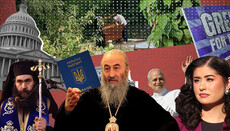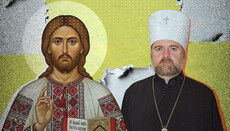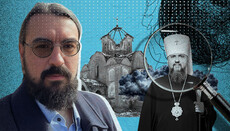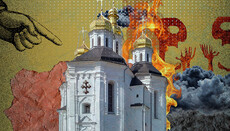Who and what is behind the arsons of Orthodox monasteries and churches
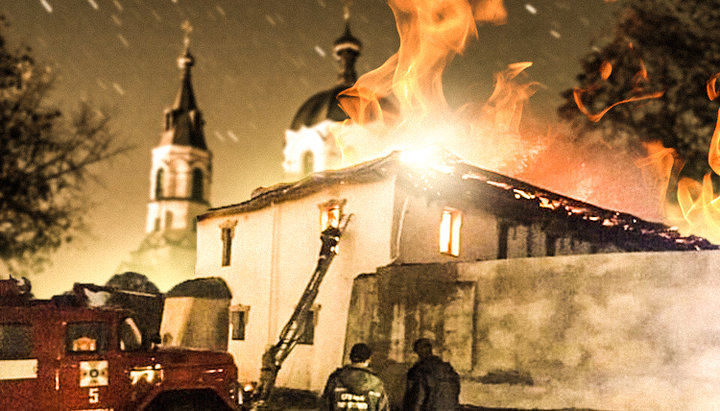
In Ukraine, there are again attempts to stir up confrontation on religious grounds.
Since the beginning of 2020, reports of fires in monasteries and churches of the Ukrainian Orthodox Church have become more frequent. The main cause of the fire is arson. In the past two weeks, fire reports resemble military reports. Who is behind this, why is this happening right now and how to react to it?
On April 6, the Church of the Jerusalem Icon of the Mother of God was set on fire. There may have been a whole group of arsonists.
On April 12, 2020, there was a fire in one of the buildings of the Holy Dormition Monastery of the UOC in the village of Lipki of the Goshcha district, Rivne region.
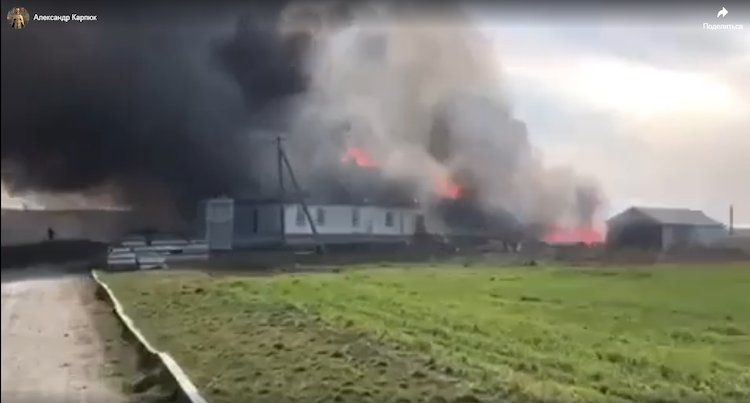
According to eyewitnesses, the arson of the monastery’s outbuilding took place during the liturgy on the feast of the Entry of the Lord into Jerusalem. One building burnt down completely, the other burnt partially. A bottle with traces of incendiary chemicals was found at the scene of the fire.
The time for the arson was specially chosen: a great holiday, the monks participate in the service in one way or another, which means the fire will be discovered after a while, which is enough time for the fire to take over the whole building. In other words, the arson was intentional.
On April 15, 2020, the old wooden St. Paraskeva of Serbia Church burnt down to the ground in the village of Lukavtsy in the Vyzhnytsia district, Chernivtsi region.
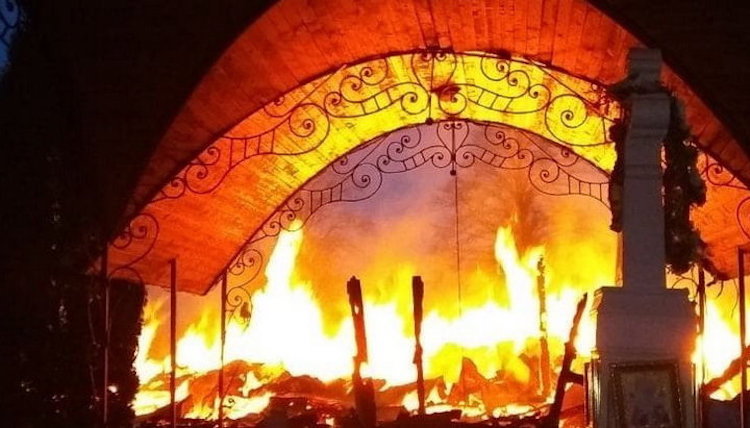
The fire department is still investigating the reasons, but the fact that the fire occurred at night allows us to assume with high probability that it was deliberately set on fire.
On April 21, 2020, the Holy Martyr Charalampus Convent in the village of Gamalievka in the Shostka district, Sumy region, the fire partially destroyed the monastic cells, the refectory, and the tomb of the hetman of the Zaporizhzhia Army Ivan Skoropadsky located in the monastery.
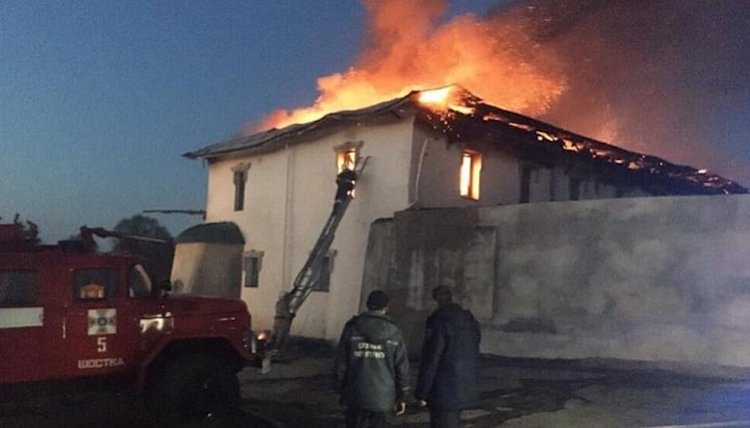
Officially, the cause of the fire was not named. However, in this case, the version of arson is one of the main ones.
On April 24, 2020, a fire occurred in the Holy Dormition Monastery of Odessa.
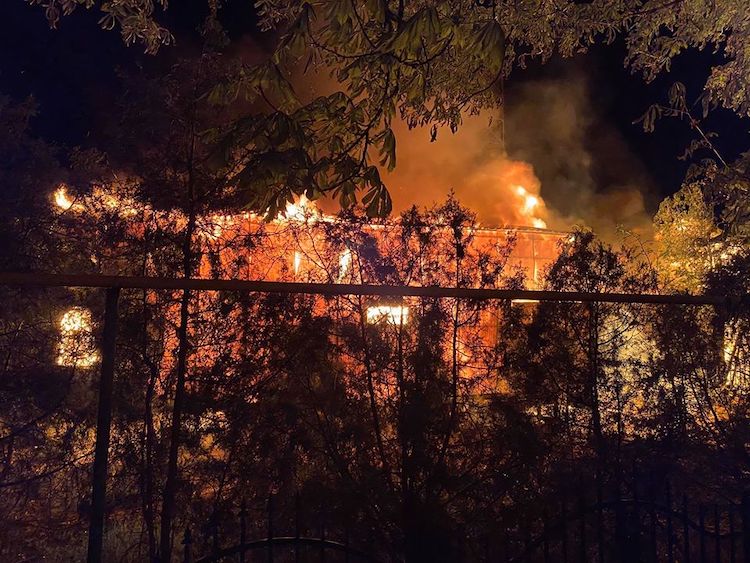
“On the night of April 23-24, there was a big fire in the Holy Dormition Monastery of Odessa, the cause of which, according to the preliminary version, was an intentional arson. A household structure with an area of more than 600 sq. m. burnt down. Witnesses claim that an unknown person initially threw Molotov cocktails under the monastery autos Toyota Hiace and VAZ-2107. The fire was immediately put out by the monks of the monastery with the help of fire extinguishers,” says the message on the Facebook page of the Odessa Eparchy. It is noteworthy that the arsonist initially attempted to set fire to the cars and threw Molotov cocktails under the cars, not on them. Car tires are the most combustible part. If they catch fire, it is almost impossible to put the car out.
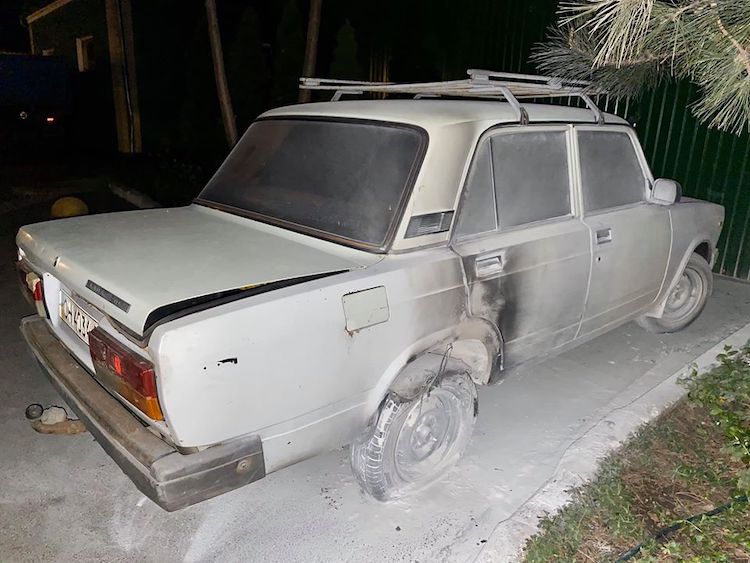
In seconds, the flame covers the entire car body, followed by a gas tank explosion, and if the car is near some buildings, the fire spreads there. The arsonist targeted the tires, which means he knew what he was doing. The fact that the brethren were able to put out the car and stayed alive was God's mercy.
All these circumstances, as well as a small-time gap between arson attacks, allow us to say that we are dealing with an organized and well-prepared action (at least provided with qualified perpetrators). Who stands behind it is generally clear – those who hate the canonical Church and want to stop its existence in Ukraine.
Let’s look back and see how the situation was with the arson of the UOC churches in the recent past.
- December 3, 2014, January 27 and April 22, 2015, that is three times in a row, the attackers tried to burn the Church of the “Joy of All Who Sorrow” Icon of the Mother of God in Babi Yar Park. In one attempt, as many as six Molotov cocktails were thrown into the altar.
- January 27, 2015, the St. Tryphon Church located in Troyeschyna district of Kyiv was set on fire. The arsonist left a leaflet at the scene of the crime: "Get the Moscow Patriarchate out of the Ukrainian land!"
- November 19 and 30, 2015, the attackers robbed and set fire to the Holy Trinity Church in five places in the village of Rokytne, Rivne region.
- January 5, 2016 – an arson of the Church of the "Softening of Evil Hearts" Icon of the Mother of God and St. Peter Mohyla in Kyiv.
- February 22, 2016 – an arson of the Church of the "Satisfy My Sorrows" Icon of the Mother of God, Mykolaiv, Lviv region.
- April 24, 2016 - an attempt to set fire to the St. Agapetus of Pechersk Church in Kyiv. The police reported arson.
- August 26, 2017, the Epiphany Church burnt down in Mykolaiv.
- January 25, 2018 – an attempt to set fire to the Tithes (Desiatinny) Monastery in Kyiv. And on the eve of this attempt, the radicals from the nationalist organization S14 tried to storm the monastery.
- February 3, 2018, the Church of the Holy Equal-to-the-Apostles Prince Vladimir in Lviv was burning.
- March 10, 2018 – an arson of the Transfiguration Church in Kyiv.
On February 13, 2018, in the midst of all these fires, the “ZIK” TV channel broadcast a program with the then head of the Department for Religious Affairs Andrei Yurash and a representative of radical activists Dmitry Reznichenko.
They discussed the arson of the Tithes Monastery in Kyiv. The dialogue is very indicative.
Presenter: Now they are trying to solve these problems as they consider it necessary. Someone considers the structures near the remains of the Tithes Church to be the temple of God, someone considers it an illegal building, in fact, the IAF (small architectural form – Ed.) and tries to burn it. How reasonable is this, how balanced is this decision?
Reznichenko: Do you ask me as a representative of the party that attempted to burn?
Presenter: No, I'm just interested in your point of view.
Reznichenko: And this is the only option. Here, Andrei [Jurash] said right that when there are no legislative mechanisms to limit the activities of an openly hostile organization, nature, as you rightly said, does not tolerate emptiness. So, if the state is not going to fight an organization hostile to the state, this should be done by society.
Presenter: There is a very fine line here. Who determines whether it is hostile or not?
Reznichenko: And here, as always, we would need legislative norms, but they are none. Therefore, as always happens in the free play of historical elements, it is determined by the fact.
From this dialogue it follows:
- Firstly, the approval of arson attacks from both the representative of the radicals and the representative of the authorities.
- Secondly, the declaration of the UOC as a hostile organization.
- Thirdly, the actual call to continue these arsons.
And as we can see, they continued. This was greatly facilitated by the fact that law enforcement agencies were in no hurry to investigate attacks on temples, and the attackers got away unpunished with their offences. And as you know, impunity breeds new crimes. It was as if they were given a signal that society favours such activities.
In recent years, leading politicians and almost all media outlets have tried to set public opinion against the UOC, accusing it of being an “aggressor country” body. Today, the topic of confrontation with Russia on the agenda has given way to the coronavirus. COVID-19 is breaking records for filling the information space. And it is logical that now public opinion is set against the UOC in connection with accusations of its non-compliance with quarantine requirements introduced by the state.
On April 16, 2020, the “Media for a Conscious Choice” organization issued a statement: “We, representatives of the “Media for a Conscious Choice” media movement and media public organizations of Ukraine, condemn the appeal of the Primate of the UOC of the Moscow Patriarchate Onuphry to parishioners to come to Easter service during a coronavirus outbreak. <...> We consider such a statement as an attempt of sabotage against the Ukrainian people."
This is despite the fact that His Beatitude Metropolitan Onuphry did not call to come to churches but only said that Easter services would be held.
Law enforcement agencies were in no hurry to investigate attacks on temples, and the attackers got away unpunished. It was as if they were given a signal that society favours such activities.
At Easter, April 19, 2020, Ayder Muzhdabaev, Deputy Director of the Crimean Tatar “ATR” TV channel, who resides in Kyiv, recorded a video message in which he said: "The situation with the coronavirus has shown that the OCU and the UGCC take care of people, and the UOC is one of the main breeding grounds for the coronavirus in Ukraine, the Church-evil, the Church-killer, which shows a total disregard for both Ukraine as a state and Ukrainians as a nation".
Let us not repeat the threats of state officials to dig up roads to the temples of the UOC, they are well known. All this forms the ideological basis for various actions against the Church, including arson. The national radicals hired in this way may well decide that the burning of the UOC temple is a good deed, a contribution to the fight against the coronavirus, as it used to be a contribution to the fight against the "aggressor country".
However, the way in which the fires have been made over the past few weeks makes one doubt that this is the work of exalted singles who have heard false accusations against the UOC.
All this is most likely to be done purposefully in order to shake up the domestic political situation and gain political dividends from this: to seize power or dramatically change the state policy.
The situation is quite complicated now: the country is quarantined and thinks in horror what will happen to the economy, how many people will lose their jobs and what will follow. Forests are burning in Chernobyl and other places. Psychological stress from fear of the coronavirus is driving people to the point where they threaten to kill their neighbors by suspecting them to be infected.
Under these circumstances, some large-scale political actions are possible, and they need a catalyst to provoke social unrest. And the religious sphere, as the most sensitive in this respect, is a convenient target for such provocations. Again, as a few years ago, there are attempts in Ukraine to stir up sectarian strife and confrontation, to pit people against one another, to incite hatred in them.
All this is most likely to be done purposefully in order to shake up the domestic political situation and gain political dividends from this: to seize power or dramatically change the state policy.
And the most important thing now is not to give in to these provocations, not to revenge or take justice in one’s own hands, not to let anger and hatred take over our minds. It may be difficult to do so, especially if arson arracks on temples continue, which is very likely.
"Do not repay anyone evil for evil. Be careful to do what is right in the eyes of everyone. If it is possible, as far as it depends on you, live at peace with everyone. Do not take revenge, my dear friends, but leave room for God’s wrath, for it is written: “It is mine to avenge; I will repay,” says the Lord." (Rom. 12, 17-19)
As for law enforcement agencies, they must realize that the case is taking a very serious turn, and their connivance or inaction may lead to very bad consequences for the State itself. Only quick and effective action to investigate these crimes and punish the perpetrators can stop the abusers. And society must demand that law enforcement agencies fully perform their duties in accordance with the law.
And one more thing is important. Certainly, the investigation of a series of fires in monasteries and churches of the UOC should be conducted by law enforcement agencies, but the moral duty of every religious or public organization in this situation is to publicly condemn these terrible crimes. Such a statement or, on the contrary, silence is a test of decency.

